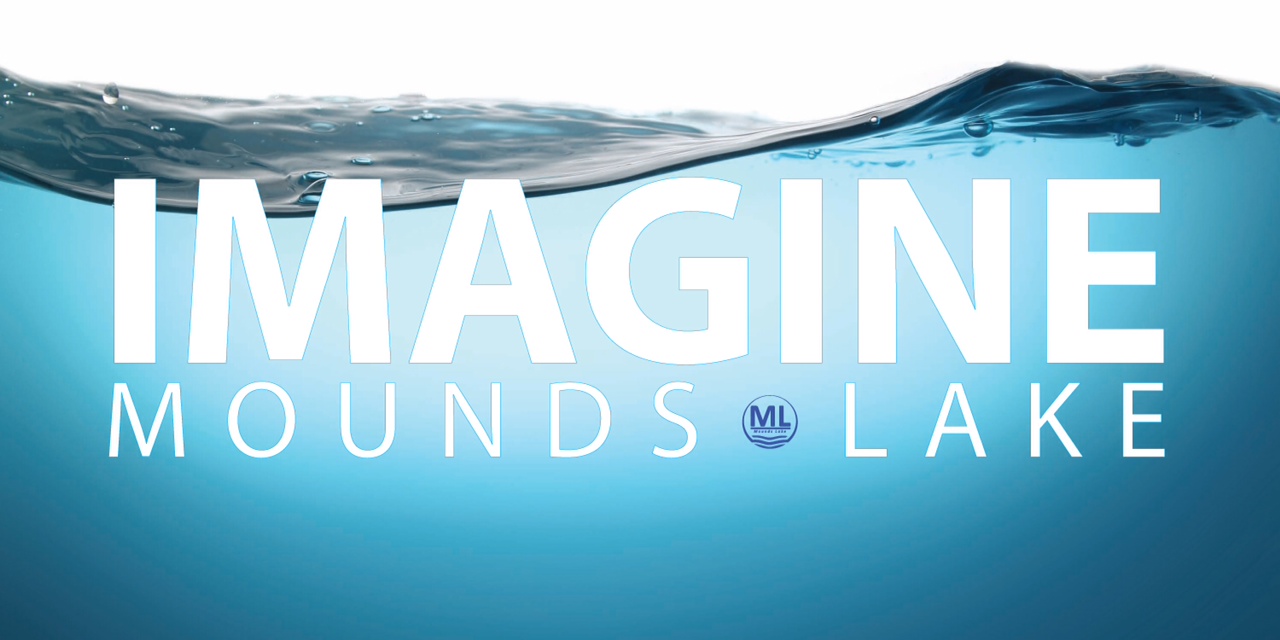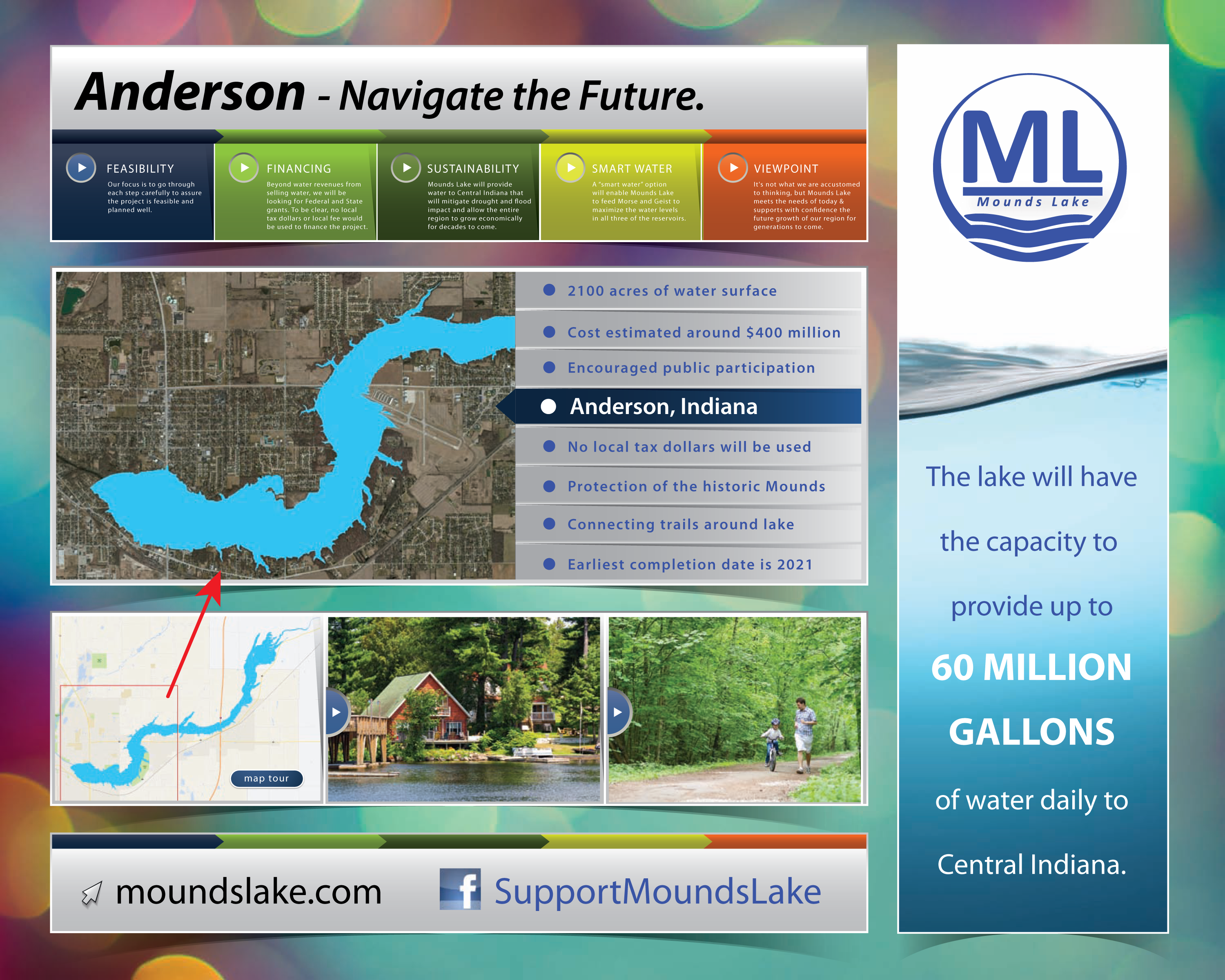
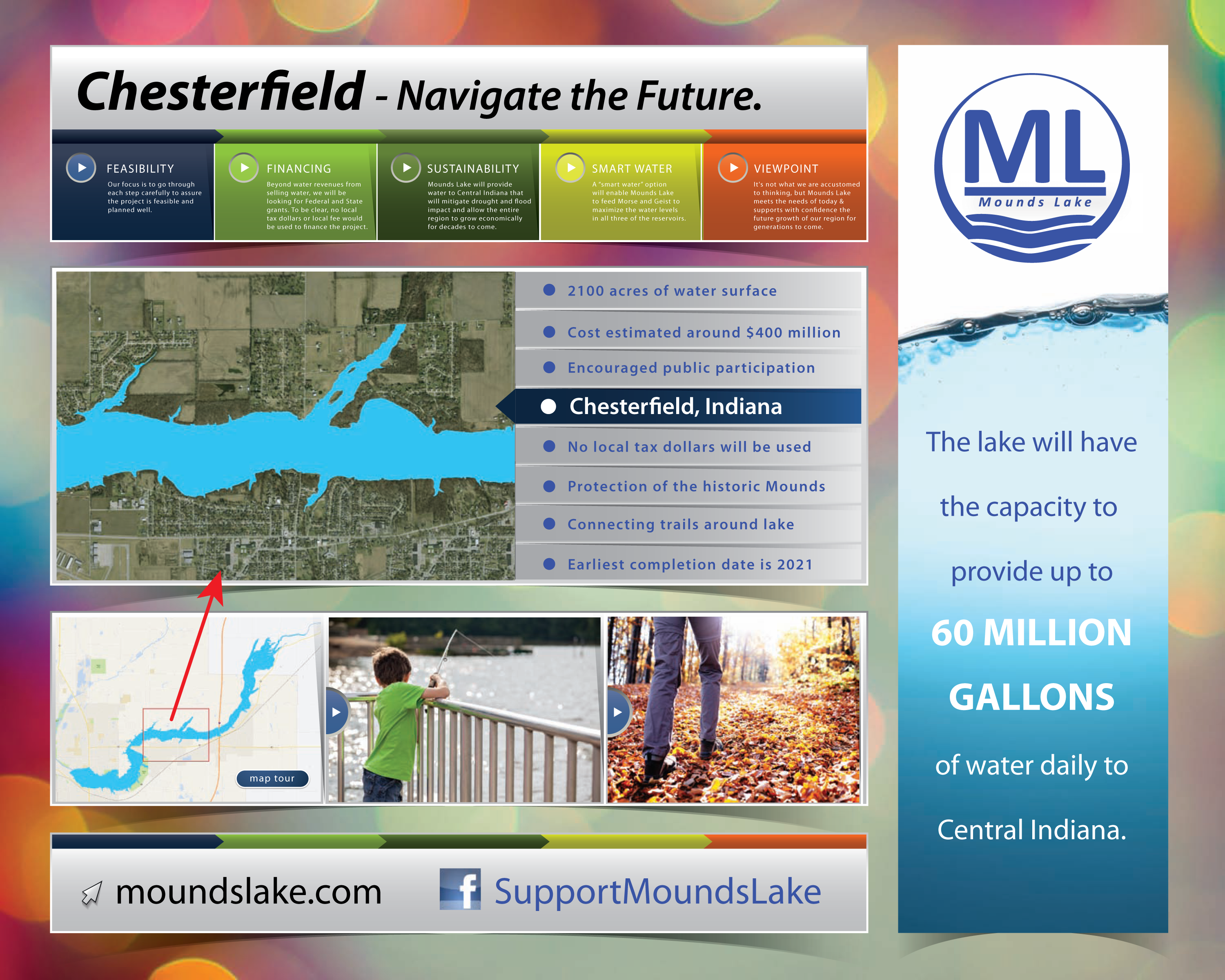
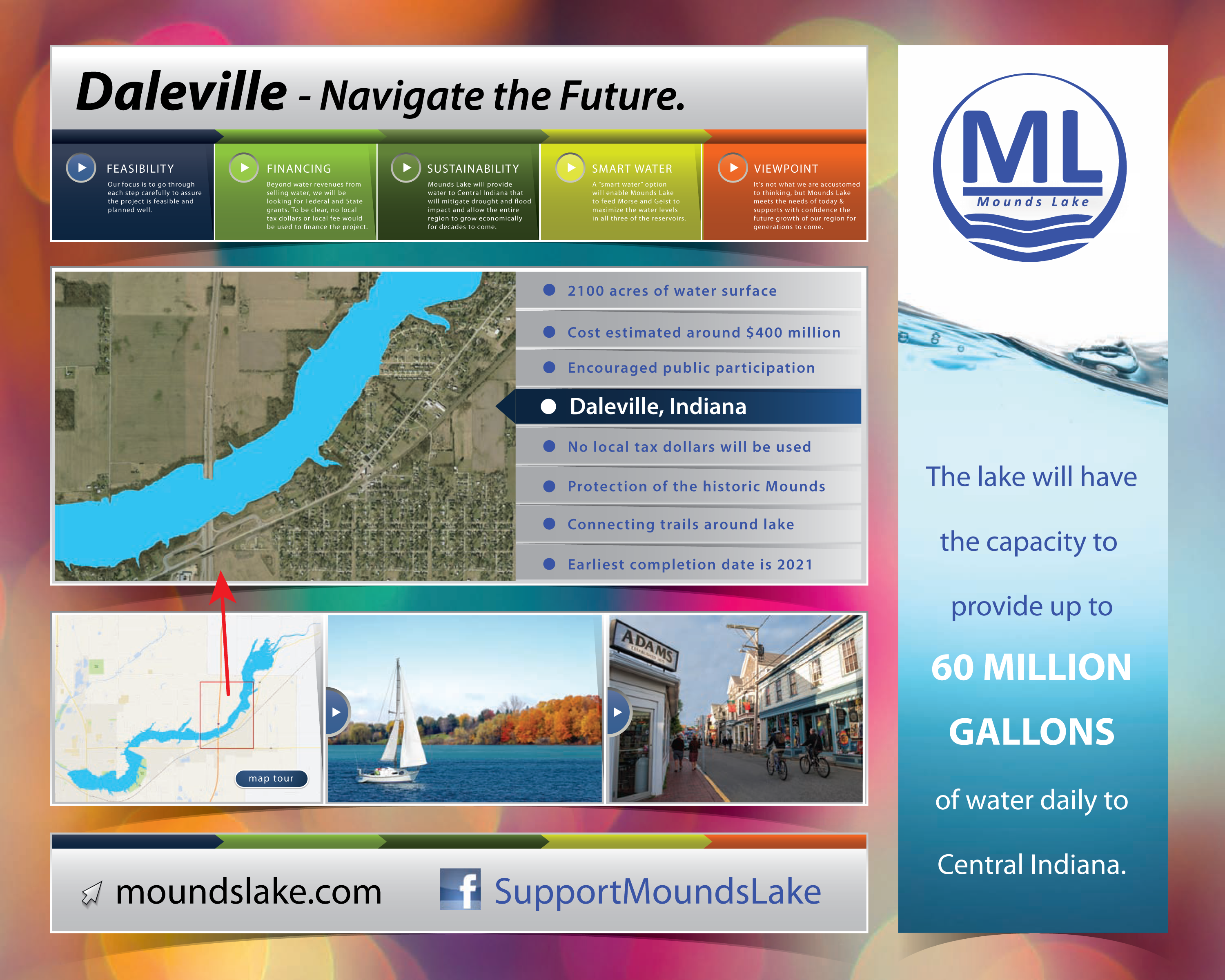
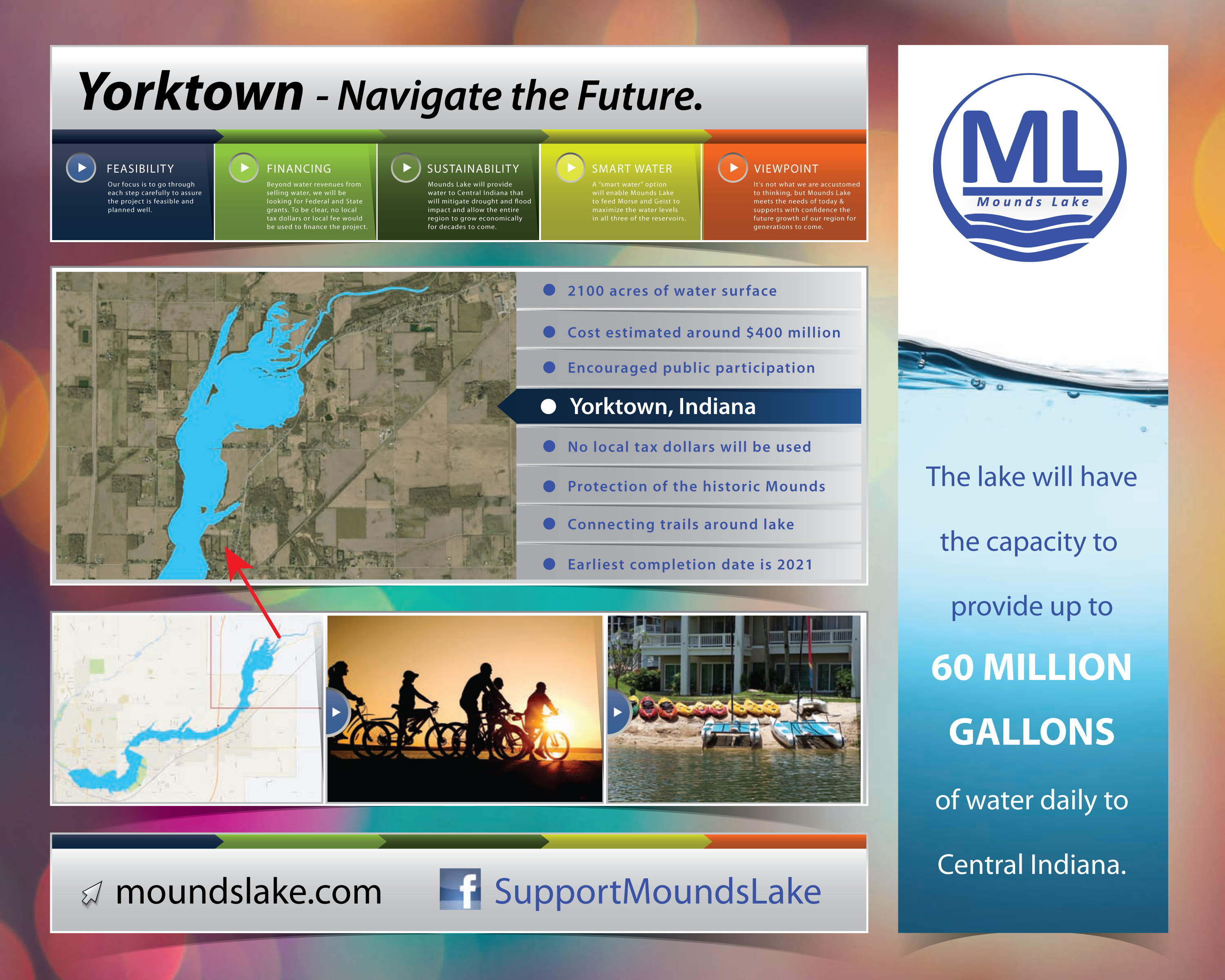

The Mounds Lake project began as an idea proposed during the 2010 Madison County Leadership Academy. Seeing the possibilities of a project of this magnitude, the Corporation for Economic Development for Anderson/Madison County contracted a Phase I study to determine the feasibility of a project of this size. DLZ Engineering of Indianapolis conducted an initial study in 2010 revealing the feasibility in constructing a 2,100 acre lake from Madison into Delaware County. With this information, the CED moved forward with Phase II of the Mounds Lake project in an effort to meet future water needs in central Indiana
Most of the residents and businesses in central Indiana depend heavily on three reservoirs for their water: Geist, Morse, and Eagle Creek
These reservoirs were designed and built between 1940 and 1970, when the population of central Indiana was around 700,000. Today, that population has more than doubled to approximately 1.8 million residents.
If things remain as they are, experts predict a water shortage looming for this region of our state.
According to Indiana Department of Natural Resources (DNR) Water Data, about 70% of water withdrawals in 2012 for Central Indiana came from surface water from these reservoirs, and the rivers and streams that supply them. About 30% of the region’s water withdrawals came from groundwater aquifers.
Drought conditions in the past years have heightened the awareness of water need, and better management of existing water sources in Indiana.
A 2004 central Indiana Malcolm Pirnie water report states that central Indiana’s surface water supplies are nearly fully developed and that net surface water use will likely exceed minimum stream flow requirements before 2020.
Central Indiana elected officials, along with the Indiana Chamber of Commerce and Indy Chamber of Commerce have made planning for water resources a top priority.
According to the Indy Chamber of Commerce 2010 Water Study:
“If no change occurs, the region will be unprepared for future growth and unable to serve increasing demands in an affordable and reliable manner.”
Consequently, managing central Indiana’s surface water and groundwater supplies now is imperative for the region’s continued economic vitality.
The Mounds Lake Project in Anderson would serve as a new water source for the central Indiana region.
The earthen dam for the proposed lake would house floodgates as well as a cement spillway.
Two locations for dams are being considered:
- One is near C Street.
- The other is farther west near Columbus Avenue.
Given either location for the earthen dam, this would create a 2,100 acre lake with a pool height of 876 feet above sea level (making the lake about 50 feet deep at the dam and 9 feet deep north of Daleville).
Mounds Road, Scatterfield, Lindberg, Interstate 69, and 300 South would remain much like they are today, only higher, due to the configuration of the dam and the interstate.
The flow of the White River would continue during the construction of the lake creating no disruption to either upstream or downstream flows, while downstream flooding in Hamilton and Marion counties will be reduced.
The proposed Mounds Lake would impact public infrastructure, such as: sewer, water and power lines, telecommunication, roads and bridges, and even the airport runways.
Based on modeling from drought years 1940 and 1941 (two years where there was no measurable rainfall):
- the proposed lake could continually produce 60 million gallons a day (MGD) of water flow,
- sixty (60) MGD is above the minimum amount required for flow into the White River.
- this is a crucial piece of information as it pertains to the primary reason for this project — providing an needed future water resource for Central Indiana.
“Our goal with this project is to leave the environment better than before the project. ” — Rob Sparks
The primary focus of the Environmental Feasibility study procured by the Anderson (CED) centers around the concern of possible groundwater contamination from toxic dumps and/or past GM sites.
NOTE: One of the goals of this project is to enhance the existing environment, while providing a needed regional water resource.
According to the Study performed by SESCO of Indianapolis, the following has been determined:
- There is no known contamination of any level coming from affected areas with the exception of the GM site.*
- Sampling of the White River has shown no contamination from any of the affected area.
- Of the total site, focus has been narrowed to about 160 acres of commercial/industrial development within or near the proposed pool – about 80 acres of this is in the impacted area and would require additional examination from current orprevious impact.
*More information will be forthcoming concerning the GM site and will be shared with the community as soon as it is received.
Public access with parks, trails, and art is another area of concern about the local development of Mounds Lake. A number of ideas to provide recreation and cultural amenities to our community are being considered through the Mounds Lake project:
- a 25-mile trail around the lake could be a cornerstone of this effort,
- art reflecting our past could tell the story of our community, from the ancient mounds builders of 2,200 years ago to 20th century innovators Mounds Park could expand west onto the Bronnenberg campus of Madison County; and the protection of the historic Mounds will be planned carefully (the elevation of the Mounds would be 30 feet above the pool height while shoreline protection will be added to eliminate any erosion possibilities in the future),
- the Rangeline Nature Preserve mountain biking and hiking trail would be expanded to the north into the Killbuck Creek valley and the Mallard Lake site, connecting the trail at Shadyside Park.

- Estimated cost of the proposed Mounds Lake project – $400 million
- Funding sources being sought for the project include:
- Federal and state grants,
- Private foundation monies,
- Water utility revenue.
NOTE: While many avenues of paying for this project are being explored, NONE involve local taxpayers.
Mounds Lake Commission
- Proposal – That the communities come together to form the Mounds Lake Commission that would oversee the project
- Proposed authority of the Commission:
- build a water utility that would sell water generated at the dam as a way to fund the construction and long term maintenance of the lake,
- creation of a zoning district in and around the lake with design standards,
- determination of water uses,
- maintenance of the public space related to the lake, as well as long term care for the dam and lake itself.
Commission members:
Would include representation from the communities affected by the proposed Mounds Lake including: Anderson, Chesterfield, Daleville, Yorktown, Madison County and Delaware County.
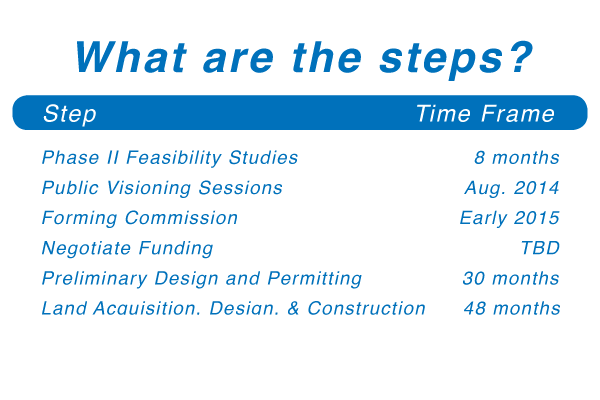
If you have any immediate questions, feel free to call or email. However, you may also want to message us on Twitter and Facebook for quick questions.
Ask your questions @MoundsLake. Use the hashtag #NavigateTheFuture when talking about the project!


